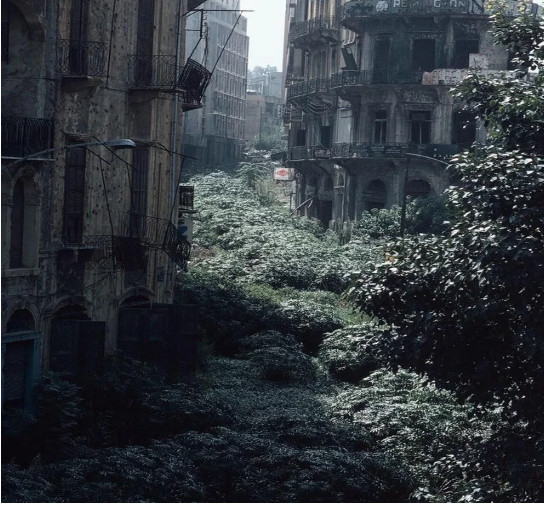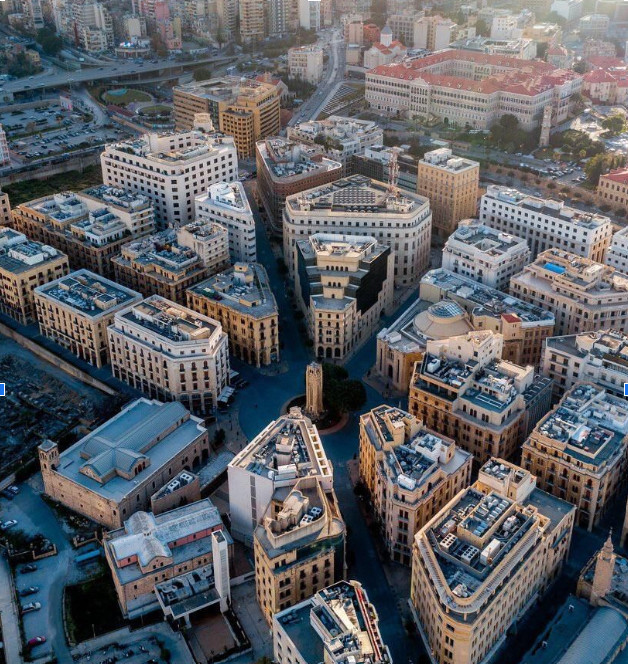The Transparent Cities program (Transparency International Ukraine) continues to tell about the experience of rebuilding cities that once suffered from war. With practical advice, we can better plan and implement reconstruction measures and avoid mistakes and difficulties in this process.
Lilet Breddels, art historian from Amsterdam, director of the Archis Foundation cultural think tank, and publisher of Volume Magazine, spoke about the reconstruction of Lebanon, the city of Beirut.
Historical context and scope of destruction
Beirut suffered massive damage during the 1975-1990s civil war in Lebanon, a conflict between the Muslim and Christian sides. The city, located almost in the middle of the Lebanese Mediterranean coast, became one of the main theaters of the war.
During the war, Lebanon’s capital split into western and eastern parts, with the so-called “green” demarcation line running between them. Along this line, most of the destruction and casualties occurred as snipers were sitting in buildings on opposite sides. The city center was equally damaged. Martyrs’ Square, located in the heart of Beirut and a symbolic meeting place for the Lebanese, was almost destroyed.

Green demarcation line in Beirut in 1982 © Reddit
Due to the ongoing hostilities, citizens were forced to move massively to other parts of the city, depending on their political or religious beliefs, or even leave Beirut altogether. The population of the city now is 2.5 million, which is almost 1 million more than the year before the civil war, in 1974.
However, the Lebanese are convinced that even after peace came in 1990, the spirit of war is still in the air. There was never any real peace between the parties, and all post-war life resembled only a temporary ceasefire. In the end, in 2006, Israel massively bombed the city and caused more serious damage.
Features of the reconstruction
It all started with rubble removal. Beirut’s construction debris was piled up in a huge mountain on the seashore, turning the vacation spot into a massive landfill. This problem remains unsolved.
To rebuild the center of Beirut, the Lebanese authorities created a joint-stock company called Solidere (translation from the French acronym - Lebanese Company for the Development and Reconstruction of the Central District of Beirut) in 1994. Solidere was partially private and had commercial interests. The company was mandated to organize and carry out the reconstruction until 2019. It was funded by the Lebanese government, international banks and organizations, and the Persian Gulf states.
Historically, the center of Beirut was a chaotic place with a lot of small shops and markets. Many people owned land and residential area within the same neighborhood. The task of Solidere was to carry out an organized rebuilding. Therefore, the city changed the law and allowed Solidere to buy out property rights and provide shares in the company instead of money.
This decision was later criticized for several reasons. Firstly, the number of shares was lower than the market price of the seized property. Secondly, the owners had no choice: either give the rights to Solidere or renovate the property themselves to the company's high standards.
There was no temporary accommodation for refugees in the city, so Beirut residents moved into houses half-ruined by the war.
After obtaining all the rights and permits, the company began planning. The company did not hold public architectural competitions, but only imitated transparency — the winner was determined in advance. The entire reconstruction process was centralized and under the full control of Solidere.
Ultimately, the plan was to make Beirut become the Paris of the Middle East. People from other countries would see a more “Western” way of life in the Lebanese capital, and Europeans would have a taste of Lebanese and Eastern traditions in general. Solidere focused mainly on making a profit, so, preserving Beirut's historical heritage took a back seat.
However, Beirut has preserved authentic cultural monuments and opened archaeological sites. The Martyrs' Monument in the center of the Lebanese capital was preserved, restored, and installed in a square with deliberately preserved traces of the war. Particular attention was paid to the historic Baccarat building, located on the border of the demarcation line. After a lengthy restoration, a cultural center and a civil war museum were opened there.
The city center was completely transformed and filled with buildings in the style of French modernism, and that makes sense because the French led the reconstruction. Beirut even built a copy of the Place Charles de Gaulle in Paris!

Reconstructed center of Beirut © Reddit
The first floors were filled with elite boutiques of world-famous brands such as Fendi or Louis Vuitton. And the owners of the new apartments were the wealthy, who bought up housing just in case and considered Beirut as a second home. After the war in Syria, which borders Lebanon, foreigners left most of the apartments.
The rules prohibited the construction of buildings higher than 8 floors in the historic center. For this reason, other areas of Beirut were built with office skyscrapers to make more money. These business districts are out of step with the city's urban pattern, inaccessible to residents and small businesses, and have no quality recreational facilities.
Beirut residents have a very negative opinion of the reconstruction of the city. The symbols of their resistance are the buildings that did not fall into Solidere's hands. One example is the Beirut Hotel, whose owners could afford to renovate the building on their own. The banner “Stop Solidere” has been hanging on its facade for many years. And the unfinished cinema The Egg has become a place of public discussion and a center for youth protests against the current government policy.
But the suburbs of Beirut were not affected by the official reconstruction, so most of the real residents now live there. The small neighborhood of Haret Hreik in the south of the city is a good example of a different approach to reconstruction in Beirut. It was particularly affected by the 2006 Israeli attack, causing significant damage to 25,000 homes. Back then, Israel attacked members of the Lebanese terrorist group Hezbollah. In addition to them, ordinary people, such as former villagers and refugees from the center of Beirut, suffered.
Conclusions
In the end, this approach to reconstruction resulted in several problems for the city. The architects wanted to preserve the view of the city that was just before the outbreak of hostilities but did not remember the old historical times. Residents of Beirut say that Solidere destroyed more than was necessary.
Reconstruction has had a significant impact on the city's demographics. Even though the total population of Beirut has grown due to the arrival of people from other regions, the city center has emptied. This happened due to the dominance of private property, the lack of public spaces, and the expulsion of citizens from their homes. Even tourists rarely come to the center because there is nothing to do there — there is nowhere to walk, and expensive shops have closed due to a lack of demand.
Because the suburbs and the center of Beirut were rebuilt differently, these areas are very different from each other. The city does not feel whole. In different districts, groups with sometimes opposing beliefs live, which creates new risks for confrontations. After the civil war, this danger is significant for Beirut.
Tips for Ukraine from Lilette Braddells
- Distribute buildings fairly among residents, lessees, and entrepreneurs. In this way, it is possible to avoid the emergence of all-business or residential areas;
- Regulate the social housing sector. Millions of Ukrainians who have moved in search of a safer place have settled in temporary premises that are not full-fledged housing;
- Make the city attractive for living. In particular: create parks and public places for recreation, build schools and universities, and increase the number of jobs;
- Balance opportunities for citizens in all parts of the country. It will help avoid mental divisions and potential conflicts;
- Think about everything, even short-lived initiatives, for the long term. Everything built in the city should retain its value in the future;
- Carry out reconstruction considering the spiritual state of the city after the war. The key is not just to restore the past, but to leave a historical memory of the difficult times.